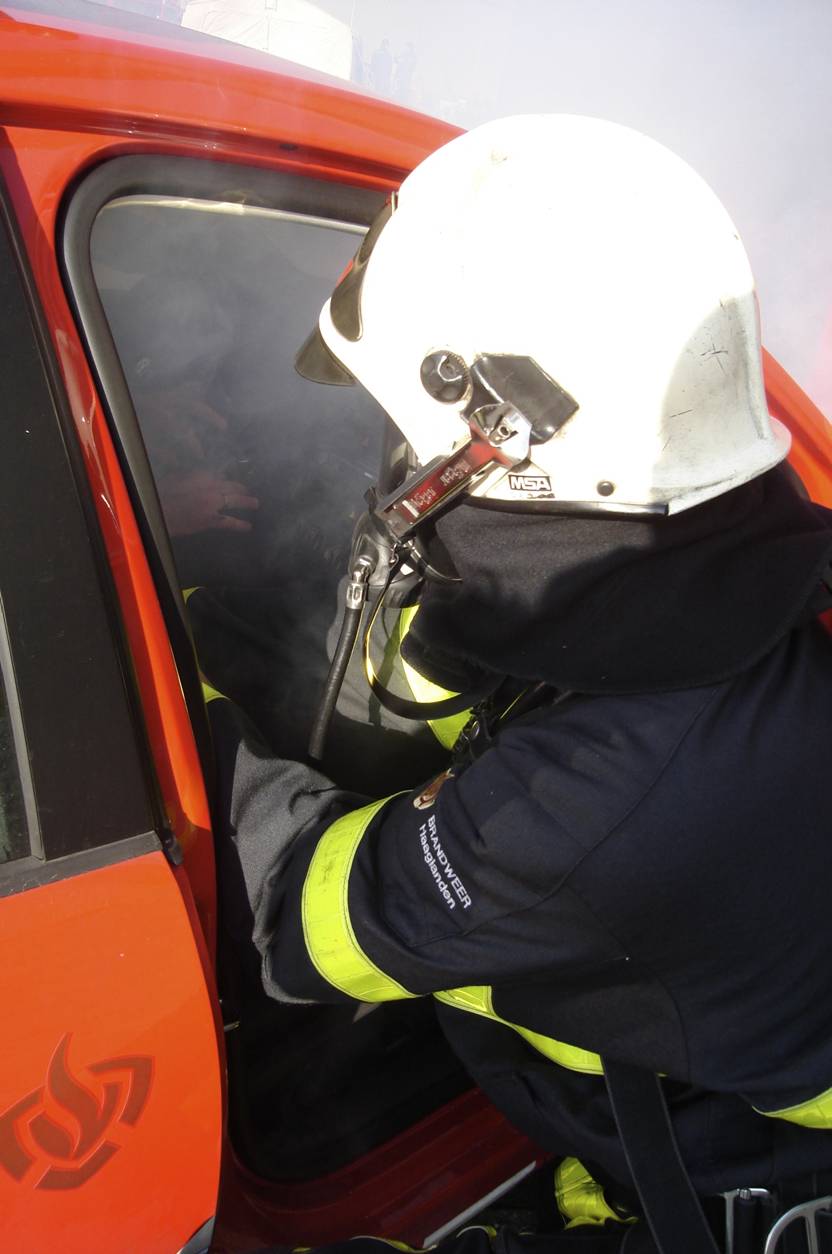'Out of the Box' exercise by Christo Motz
Editorial Advisory Panel Member Christo Motz describes an exercise he organised recently for the Zoetermeer Fire Brigade in the Netherlands
Education, training and practice - the well-known trinity within the worlds of firefighting, crisis preparation and operational emergency assistance. This is generally organised from a specific hierarchical standpoint whereby the trainers and instructors offer the students various action strategies that are set within a tight pattern.
At the request of the Zoetermeer Fire Brigade (FB), together with Jasper Weyling, the Zoetermeer FB Training co-ordinator of the Haaglanden Security District (VRH), I organised an evening of practical training for 25 volunteer firefighters recently.

The assignment consisted of several components:
-
- A fitting farewell to the old turn-out process at the Oosterheem and Stadshart fire stations.
-
- The integration of volunteers into a number of professional fire stations in The Hague.
-
- Enhancing and strengthening the team spirit and self-sufficiency of the group.
Unexpected and fast changes often induce stress, resistance and discomfort. It was my task to facilitate a part of this process of change.
Based on my ideas, a complex disaster scenario was developed, situated near the Ayers Rock outdoor sports centre in Zoetermeer. The scenario included large scale flooding and massive failure of vital infrastructure in the west of the Netherlands; it was the volunteer firefighters' task to rescue firefighting colleagues and civilians in peril.
The team would not be receiving any instructions from above (as command would be largely incapacitated), there would be no methods of communication available, only a few basic first aid materials would be to hand.
Participants were given several team assignments, and had to travel through dark and hilly terrain. At the 'incident location' they would suddenly be confronted with a number of victims spread out as though from an explosion in a vehicle.
On Monday, Jasper and I worked all day to gather all necessary material and vehicles in the surrounding area to ensure the training would go smoothly. We had constructed a Swedish army tent as the designated location for the wounded.
Together with four other firefighting instructors, we would lead the groups through the training exercise. However, we would not intervene unless the situation became dangerous.
As soon as the Lotus victims and simulation patients were instructed on site, the volunteer firefighters were briefed at the Oosterheem fire station about the goals of the training as well as the dos and don'ts. The troops were transported to the site by van, in three groups.
The breakdown of existing hierarchical structures requires improvisation, decisiveness and a new decision-making process. Firefighters are traditionally schooled in these matters. But what do you do when the system goes down? Who leads who? All the technical parameters are present, but the absence of command requires a different way of communication and deliberating.
The Royal Commandos and other special units use 'Mission Command' (mission type tactics). Based on the German 'Auftragstaktik' whereby a team or unit has a certain amount of room to manoeuvre and runs with that regardless whether or not they have communication with the 'higher' echelons.
The first assignment of this training exercise, which was completed with ease, was to cross a ditch with the aid of two logs and some rope. Next, the firefighters had to traverse a steep terrain with three men to a log, with one foot each on the log and a rope around the shoulders. This required some communication to pull off smoothly. After about 20 minutes, the first team had already reached the summit of the hill, continuing on with its log. The 'incident location' was marked by wood fires in steel drums around the burnt-out vehicle in the dark.
Eight victims lay spread out around the vehicle, including two dummies. The Lotus victims were either unconscious or had reduced faculties. The depiction of the various serious injuries such as blast wounds, partial and full thickness burns and catastrophic bleeding, were very realistic.
It was interesting to see that at first the aid workers clustered around two of the victims, without having an overview or keeping track of the situation, resulting in the other victims remaining without aid for quite some time.
The firefighters were surprised at encountering encounter all the incapacitated victims as well as the exploded vehicle after having done two basic team-building exercises. The fact that it was dark also made it more challenging. The temperature was around 0?C, making hypothermia a real-life threat.
After a while a certain level of self-organisation started to develop, whereby a number of firefighters took the lead to get an overview of the situation and to create structure. Once all of the wounded, based on an improvised triage, were gathered in the casualty tent, the exercise was declared finished after an hour and 15 minutes.
The majority of firefighters are excellent at their jobs; they are motivated and dedicated to the greater importance of rescuing people and animals and towards preventing any further damage. Acting 'outside of the box' needs, as was expected, more attention. Reality does not lie in fixed structure. Whatever we may think of and/or formalise will never cover what happens in reality.
On March 11, 2011, the Japanese government was not prepared for a chain reaction of earthquakes, a tsunami followed by a nuclear meltdown. The Japanese crisis preparation system is one of the best and most advanced in the world, but it got stuck in its formal regulations.
In the Netherlands we live in the Low Countries, with millions of people packed together, largely below sea level. There is a great dependence on critical infrastructure and high concentrations of chemicals are transported through and stored in this region.
This sets me to thinking: How do we as individuals and local communities organise our own self-reliance?
Christo Motz
www.fylgjur.com
Christo Motz, 24/01/2013